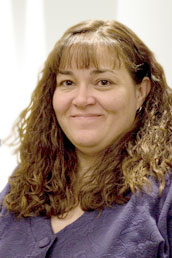Teaching marketing research has given me the opportunity to connect with people who could be future leaders in the marketing research industry, which I find to be an exciting extension of my ‘day job’ heading-up research methods and best practices for Lightspeed. I am currently teaching Consumer Insights at Northern Kentucky University. Teaching undergrads marketing research has made me reevaluate how we in the industry talk about various topics and try to come up with simple ways to explain what we do. One of my first challenges was coming up with a framework that summarizes the uses of marketing research and the specific research techniques tied to each use. I was thinking this should be simple; however, I quickly realized I couldn’t find what I wanted, so I created my own framework.
I started with the marketing research uses as outlined in the textbook by Burns, Veeck, and Bush (2017) that I’m using in my class. They tie the uses back to the definition of marketing research from the American Marketing Association:“Marketing research is the function that links the consumer, customer, and public to the marketer through information—information used to identify and define marketing opportunities and problems; generate, refine, and evaluate marketing actions; monitor marketing performance; and improve understanding of marketing as a process. Marketing research specifies the information required to address these issues, designs the method for collecting information, manages and implements the data collection process, analyzes the results, and communicates the findings and their implications.”
For each of the uses I created a list of research techniques that might be utilized. For example, to identify and evaluate marketing opportunities and problems one might conduct a habits and practices study or an unmet needs study. Based on this list I then reworded and shifted some of the uses described by Burns, Veeck, and Bush and the AMA definition.
One of the things I also wanted was a visual to capture this framework. Having something more visual can help people recall the information more easily. Based on all this here is the framework I developed:

At a high level we have applied research and basic research. As Burns, Veeck, and Bush explain applied research is conducted to solve specific problems while basic research is conducted to expand general knowledge. The primary use for basic research is to improve marketing and marketing research as a process. This often means either academic research or what marketing researchers call research on research where the focus is frequently on establishing best practices.
There are three uses for applied research:
- Strategic marketing management involves getting the big picture by understanding opportunities, problems and potential targets.
- The marketing mix is focused on planning and implementing the 4 P’s of marketing—product, price, place, and promotion.
- Marketing performance requires assessing performance by monitoring and analyzing what is happening in market.
Researchers often talk about the need to be more strategic, and this framework can help us do that. In my next two blogs I will discuss in more depth the research techniques tied to the three applied research uses.
References:
American Marketing Association. (2017, April 4). Definition of Marketing Research. Retrieved from: https://www.ama.org/AboutAMA/Pages/Definition-of-Marketing.aspx
Burns, A.C., Veeck, A., Bush, R.F. (2017). Marketing Research. (8th ed.). Boston, MA: Pearson.




